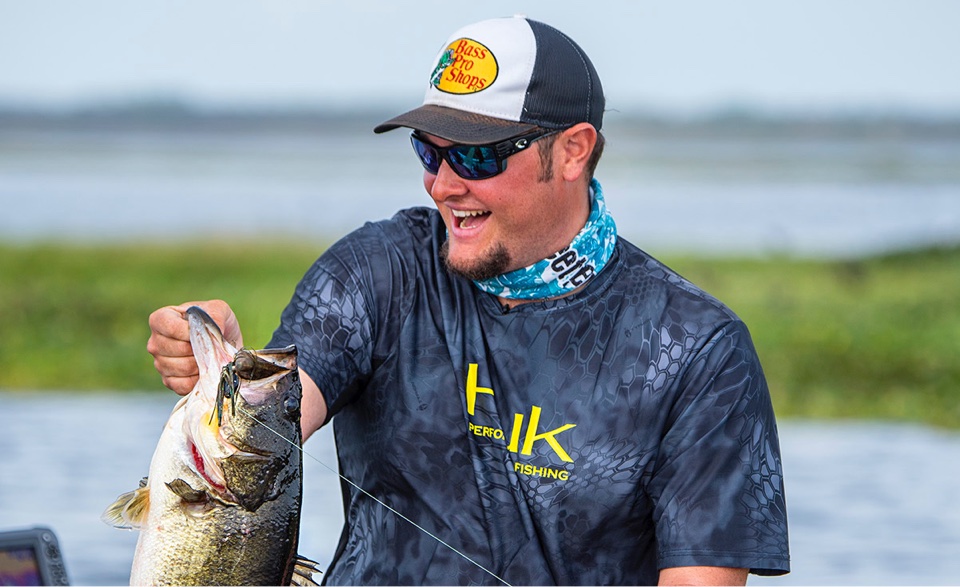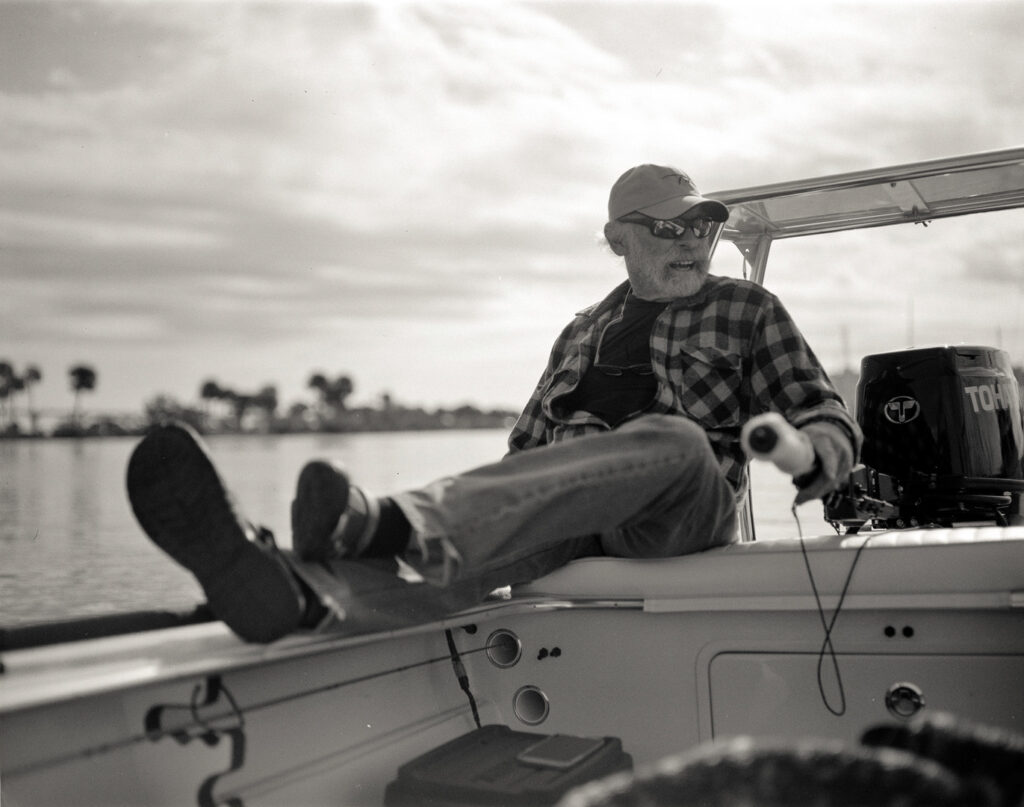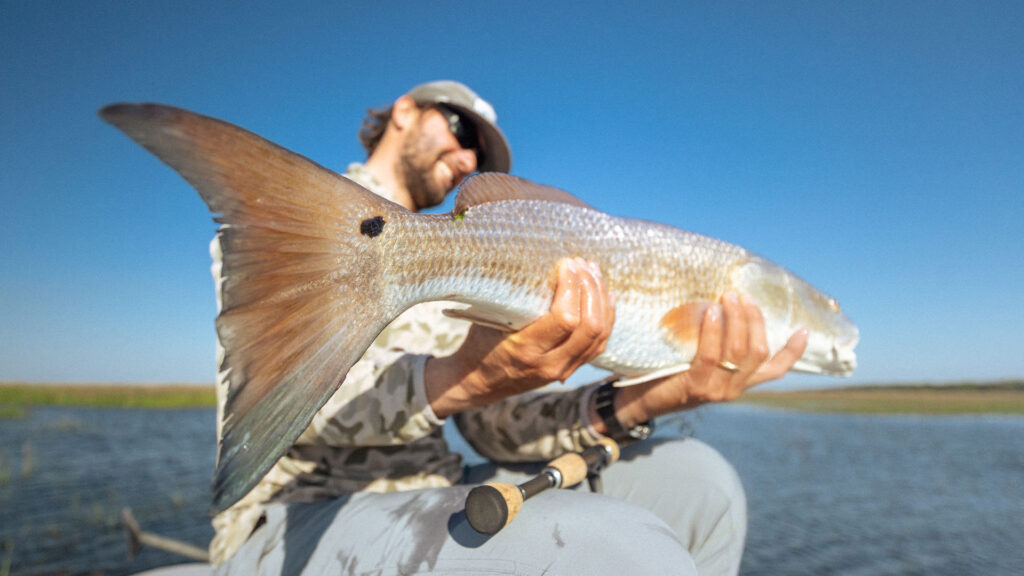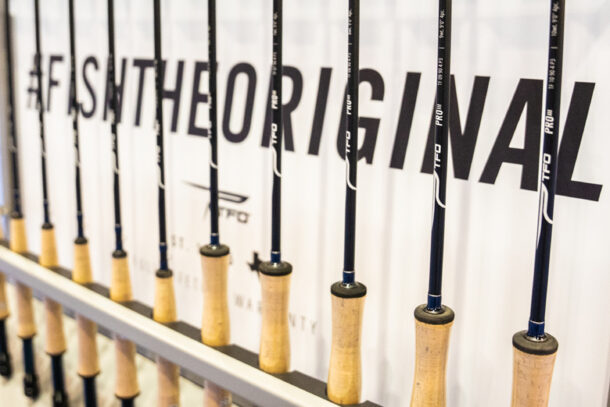Lake Okeechobee is one of the top bass lakes in the United States. It’s also one of the most challenging, given its sheer size and changing conditions. Two-time junior Bassmaster world champion and TFO Ambassador Joey Nania weighs in with a few tips on how to find bass in Lake O.
Preparation is Key
“The big thing is to do your research learning those key areas like the Monkey Box, certain places like that. Do your research on those backwater areas with good hard reed lines. But from what I heard the last hurricane wiped out the hard reed lines. And normally the key on that lake is finding the hard reed lines, even with the wind is blowing. Find a reed line that’s got good backwater behind it. Those kind of places are going to filter out the dirt and the sediment and the mud. Those Florida bass love to be in that clear water. Your best bet to catch them is in that not-sediment-filled water. Those reeds lines filter that out.
Expect the Unexpected Given Florida’s Recent Tropical Weather Trends
“A lot of stuff has changed. It’s one of those flat, shallow Florida lakes. A hurricane comes through and that can change the whole lake. It’s the same in Louisiana in those low-lying marshes. That vegetation can easily get ripped up and destroyed and killed. It can become a mess. Daytime decisions are a big thing. Understanding the wind, which way it’s blowing and which way things will be protected or blown out. Running away from the wind can be very important to having success.
Start Small
“I’ve always done well in the rim canal, those canals that go all the way around the lake. There’s some good backwaters off those rim canals. Those places are going to stay a little more stable in terms of wind conditions and weather.”
Think Outside the Box
“The spawn is always a good time. A lot of fish will spawn through the fall and into the winter. That will depend on the conditions. One of the most fun times I know of is to go down there is post spawn — April — when the fish are still shallow, but a lot of them have done their thing. They’re just in a full feed mode. That’s a great time to swim a jig. They’re done spawning and they’re in full feed mode. They’re feeding hard. That time of year is a lot of fun.
The key is finding clean water, somewhere that’s not filthy and dirty. And then it’s a matter of figuring them out. …”
The Right Equipment
“A 7-6 heavy action rod to punch the grass mats. Something to punch with 65 to 80-pound braid, something in the 1-2 ounce range to consistently punch through with every pitch. You don’t want half your pitches not go through the mat. A heavy rod with a good backbone to throw a decent jig with a soft tip. That’s really important. I would say a 7-6 Heavy Pacemaker is a great rod. The 7-6 is a perfect length. It’s not so long that it’s overwhelming and too much to fish with. It’s a got a good bounce to it. You can flip with that thing all day and not get tired. I would use a high-gear ratio reel for the punching technique, something that can punch through those mats and get the bait back to the boat quickly to get to as many fish as possible.”
The Right Technique
“It’s about getting as many flips as you can and hitting them in the head when you’re punching. With punching, it’s important to know when you’re getting the bite and nine times out of ten, your bite comes on the initial fall when you pitch it in there and let it drop, or it will be on the first hop, when you pitch it through the mat, hop it, let it fall, and they’ll get it. And if the water is really cold, you have to hop it in the hole for a long time. Normally, it’s punch it in there, let it fall once and hop it, let it fall and get it to the next good looking area or clump.
Don’t Get Frustrated
“That lake can be overwhelming. It’s overwhelming because it all looks the same. Finding the right area that has the right water quality and grass and an abundance of different grass. Work that area. And you’ve got to think there’s a population of fish that use that backwater to spawn and go through their life cycle. It’s finding that right area, hunkering down and figuring out are they on the outer edges and outer reed lines in the deeper water, or are they up in the flats trying to spawn? Do that type of thing.
“One type of grass to look for and there are a couple different types that grow on hard bottom. One of them is Arrowhead. If I’m in Florida and I find Arrowhead grass and it grows in sand. It’s 2, 3-feet tall with a spear-shaped arrowhead on it. That’s always a good sign for hard bottom. And any time you’re around a full moon the first couple months of the year finding that Arrowhead grass with that sandy, hard bottom in those backwaters is really important.”
Manage Your Expectations
“(Lake Okeechobee) is not as good as it used to be it seems like. Lakes go through cycles and weather changes. It will rebound, but it’s down right now from what it used to be. Hopefully it rebounds strong. I’m sure it will. That’s how these lakes work. But it’s certainly not what it was at one point. It’s still a great destination, but I would wait till the water warms up a bit so you can get stable warmth before you schedule a trip, sometime in March or April. January and February in Florida is always up and down. Normally you’re going to hit a cold front of some sort.”
If you liked this story, let us know. If you want more bass fishing info, check out this interview from TFO advisor Cliff Pace.







